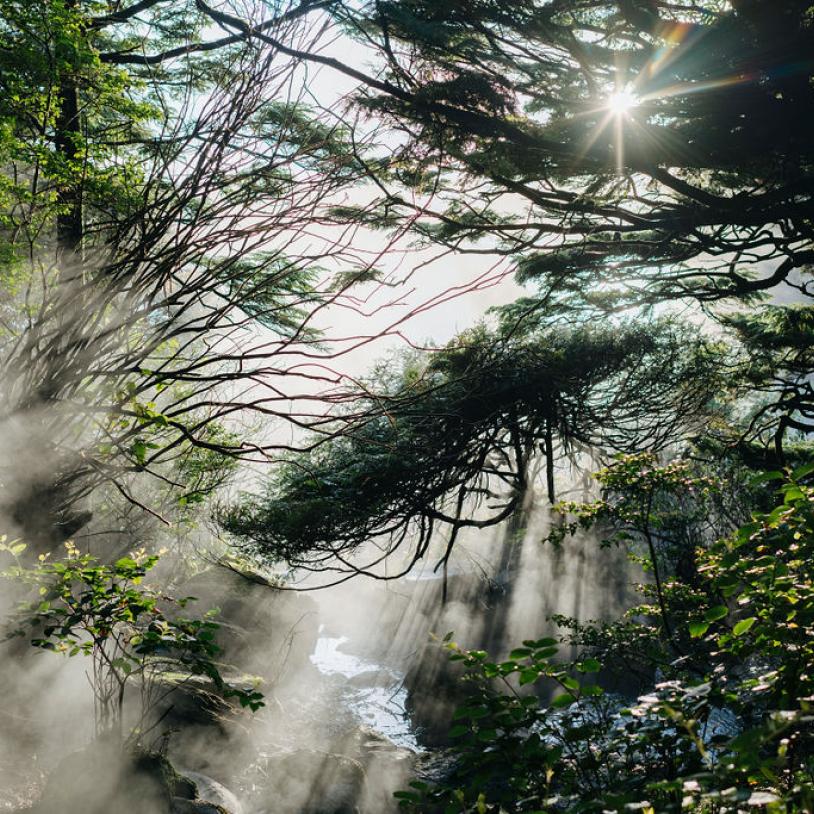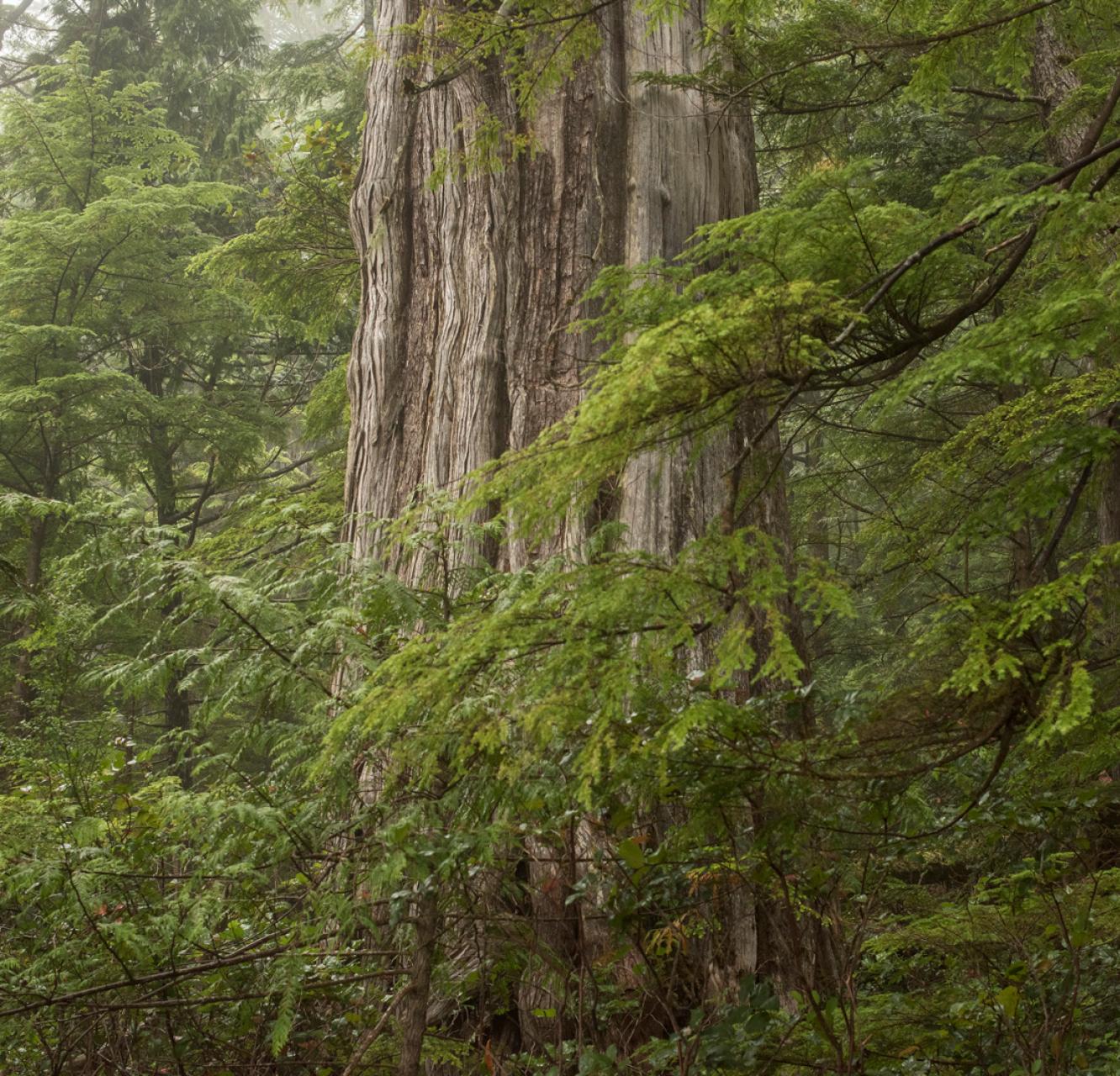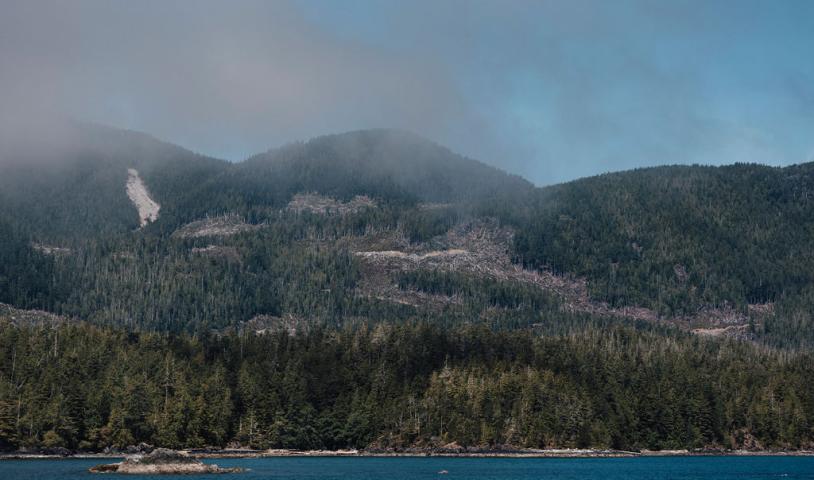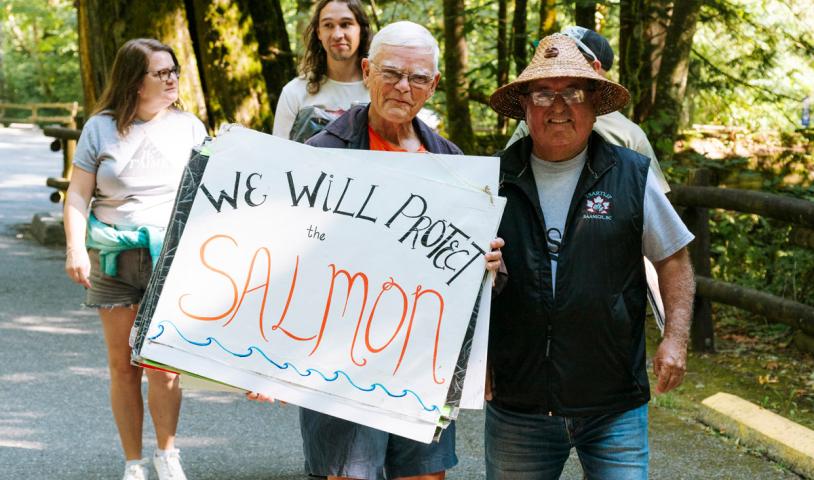Chainsaws out of the Cathedrals ‑ Wild Times
Monday, March 1, 2010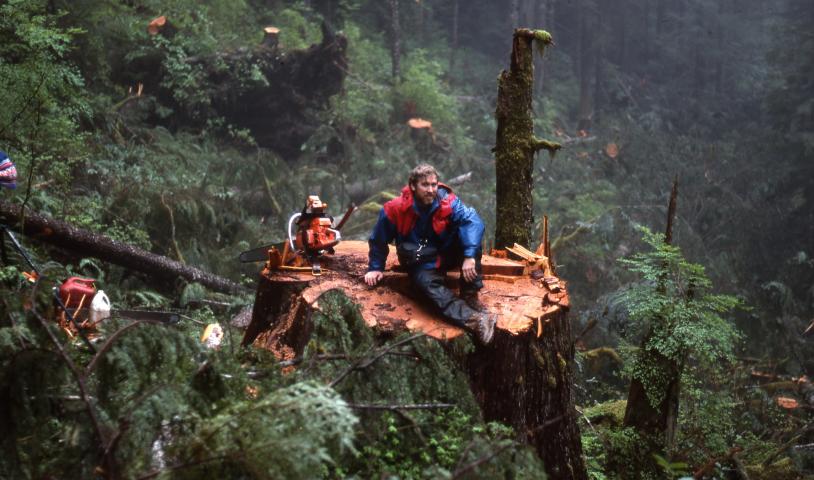
March 1st, 2010 - Read Joe Foy's Wild Times column in the Watershed Sentinel as he makes the case for ending old growth logging in British Columbia.
I’ve spent many a day (and some nights, too) bushwhacking through BC’s old growth forests. Every time I have entered one of these amazing places, I have never failed to be awed, delighted – and sometimes a little terrified.
Walking into one of BC’s ancient tall tree forests is like entering a building, where everything is just a little surreal. One’s senses are treated to a different kind of light, different smells, tastes, sounds and colours. Even time seems to roll out strangely as each ancient tree, river-polished stone, or mossy nurse log reminds you of your own too-short life span on this Earth. Spend more than a few days and nights backpacking in an ancient forest and even your dreams change. Lamp-posts morph into tree trunks, roads become animal trails, rooms become dark forest glades. It’s pretty cool.
I figure I’ve been hiking the ancient forests for four decades now.
On one of my early hikes I had backpacked alone into a little wilderness valley in the Chilliwack watershed. Just as the sun was going down I scrambled up on a big rock slab to survey the forests and mountains around me. It was misting a light September rain. The valley had gone silent. Then, in a heartbeat my feet shot out from under me on the slippery moss and wham – I hit hard and dislocated my shoulder. As I twisted around on that cold wet slab trying unsuccessfully to get my shoulder to pop back into place, I screamed out – and heard my own voice echo back.
The old trees simply didn’t care. They’d seen it all before in their thousand years of life. After the folks at the hospital got my arm back in place the next day, I realized that I was truly hooked on experiencing this ancient world. I have been hiking the big tree valleys of BC ever since.
In the Carmanah Valley on the west coast of Vancouver Island, I was lucky enough to help construct research platforms in the tops of Sitka spruce trees over 20 storeys tall. I was scared silly and awestruck at the same time. I wouldn’t have missed it for the world.
In the lower Stein Valley near Lytton, after hiking for ten days down from the headwaters pass, I have wonderful memories of seeing the panels of red ochre pictographs written on the stone face of the canyon. The air was crisp and clean, filtered by the white waters of the Devil’s Staircase cataract. I thought about those who had made those red writings, and breathed this same sweet air so long ago.
In the past decades, BC has made some good progress in protecting old growth forests for future generations. In 1980, only about 5% of the province was protected as parkland. Then, in the face of a wave of relentless industrial logging, trashing some of our last best special places, people started to demand more, and areas like the Carmanah and Stein, and a whole bunch of other places, were protected. These days, the percentage of BC that is protected from being industrialized has risen up to darn near 14% –though not all of that is forested.
Now the BC government is moving to protect some more of the old growth forests in southwest BC for spotted owl habitat. The ancient forests of Elk Creek, Eaton Lake, Fire Mountain, Ghost Pass, Glacier Lake, Douglas Creek, S&M Creek, Ure Creek, and other owl areas are, or soon will be, off-limits to the chainsaw. The province is seriously looking at protecting some of the rare old growth coastal Douglas fir forests on eastern Vancouver Island too. Hometown forests like the Linley Valley and Nanoose Forest are up for protection. This is all good and great news – but it’s still not enough, not by a long shot.
The time has surely come, after so much ancient forest has been lost to logging, to protect all of BC’s remaining old growth forests – every precious stick that remains. New Zealand has done it. The Philippines has done it. Taiwan has done it, too.
In those countries, only bandits still carry chainsaws into the cathedrals.
Joe Foy is Campaign Director for the Wilderness Committee, Canada’s largest citizen-funded membership-based wilderness preservation organization.
